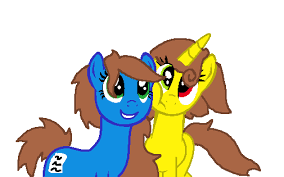
M Jenny Edwards
SME, Animal Sexual Abuse and Exploitation
March 7, 2015
OBSCENITY, PORNOGRAPHY, AND SAMUEL ROTH
Defining what is obscene or pornographic vs. merely erotic or sexy can be difficult. Erotic material tends to arouse sexual desire or excitement. Pornography and obscenity do that too, but take the imagery one step further. Sometimes a big step further.
In 1957, a landmark case in the United States set the standard for what is considered "obscene" by US courts.
Samuel Roth (1893-1974) was an American writer and publisher, who had a bookshop in Greenwich Village in New York. In the mid-1920's he began publishing work by contemporary authors that were considered risque' or sexually explicit - for example, Ulysses by James Joyce, and Lady Chatterley's Lover by D. H. Lawrence.
When the stock market crashed in 1929, Roth went bankrupt and to stay afloat, he began to publish increasingly provocative material. He used the U.S. Postal Service to distribute the publications, and because much of it was strictly banned as pornography, Roth was arrested multiple times between 1928 and 1957.
In 1954 Roth's bookshop was raided and everything, including the furniture, was seized. His indictment included 26 charges for advertising and mailing books, periodicals, and photographs that were "obscene, lewd, lascivious, filthy, and of an indecent character." Roth was sentenced to five years in prison, and fined $5,000.
Roth appealed the verdict in 1956 and in 1957 the case was heard by the United States Supreme Court. In Samuel Roth v United States, the court held that obscenity is not protected by the First Amendment to the United States Constitution, and Roth's conviction would stand.
THE MILLER TEST
In 1971, Marvin Miller picked up where Samuel Roth left off.
Miller owned a mail-order business in California that specialized in pornographic films and books. He often mailed explicit brochures advertising his wares. Five of those brochures ended up at a restaurant in Newport Beach and the shocked owners called the police. Miller was charged with distributing obscenities and sent to jail, and like Roth, he appealed that verdict.
Miller's appeals to the California courts were not successful, but the U. S. Supreme Court decided to review the case in 1972. By that time, the court had begun to struggle with its earlier definition of obscenity. A looser definition might result in fewer appeals and stop unintended bans on literature like Flaubert's Madame Bovary and John Cleland's Fanny Hill. Thus, in Marvin Miller v State of California, the Supreme Court reaffirmed that obscenity was not protected by the First Amendment, and more strictly defined what makes something obscene in the first place.
In what became known as the Miller test, or the "three-prong obscenity test," the court held that a work is considered obscene or pornographic, and may be subject to state regulation, when an average person, taking into account current standards of behavior, would find that the work
1) encourages excessive interest in sexual matters;
2) portrays sexual conduct, as defined by state law, in a clearly offensive way, and
3) does not have serious literary, artistic, political, or scientific value.
Or, to paraphrase Justice Potter Stewart, there's no quick and easy way to define pornography, but you'll know it when you see it.
OBSCENITY LAWS AND BESTIALITY PROSECUTION IN THE U.S.
In the US, obscenity cases are tried by state courts, unless they involve crush videos or child pornography, which are generally tried in federal court.
Although few cases have been tried for simulated child pornography or altered images (for example, superimposing a child's head on an adult's nude body), there are state and federal laws that prohibit these images from being created, collected, or distributed.
A vastly under investigated aspect of bestiality cases is the presence of live or simulated animal pornography. A high percentage of animal sex abusers collect, make, and share graphic images of humans fondling, masturbating, or having intercourse with animals. A smaller percentage of animal sex abusers also collect or create anime or hentai.
Anime (pronounced ah'-nee-may) is an abbreviation for animation and refers to a very stylized form of cartoon-like drawings that originated in Japan. The genre has become popular worldwide; Pokemon and Digimon are good examples of anime for the American market. Hentai (pronounced hen-tie) is an abbreviation for hentai seiyoku, which in Japanese means "perverse sexual desire." In other words, it's cartoon porn. Anime characters are frequently child-like, so when they are sexualized, it begins to look more like child pornography. Hentai drawings are often very sexually explicit, and frequently involve animals or child-like characters.
In one U.S. case in 2008 involving simulated animal and child pornography, Christopher Handley of Iowa was prosecuted under the federal 2003 PROTECT Act (Prosecutorial Remedies and Other Tools to end Exploitation of Children Today) for possession of a very large collection of hentai manga. (Manga is the story or serialized version of an anime' character, similar to Barbie of Swan Lake or cartoons based on My Little Pony.
In 2002 Loren Jay Adams of Indiana was arrested and convicted on state obscenity charges for selling bestiality videos to an undercover detective for $50 per tape. The videos depicted intercourse with a dog, and fellatio with a horse. He was arrested again in 2008 on federal obscenity charges for selling bestiality and fisting videos.
As states have begun to enact specific prohibitions against bestiality, some - like Idaho, Virginia, and Washington - have included language criminalizing animal pornography as well.
OBSCENITY LAWS AND BESTIALITY PROSECUTION IN THE U.K.
The United Kingdom takes a strong stance on pornography and bestiality.
The COPINE (Combatting pedophile information networks in Europe) scale was developed in Ireland in 1997 and used in the UK to categorize the severity of pornographic images involving children. The scale ranges from 1-10 with 10 being the most serious. Level 1 includes non-erotic, non-sexualized pictures of children and Level 10 includes bestiality and sadism involving children.
In 2003 the UK adopted the SAP (Sentencing Advisory Panel) scale, which was simpler than the COPINE, ranging from 1-5 with 5 being the most serious; again including bestiality and sadism in that category. Level 1 is for low-level pornography, and includes nudity or erotic posing, with no sexual activity.
In April 2014, a new three-point scale was adopted. Level A is most serious offense and includes penetrative sex, bestiality, and sadism. Level B includes non-penetrative pornography, and Level C is for anything that doesn't fall in Levels A or B. Sentencing can range from six months to ten years, depending on content and level of violence in the images, and whether there are prior convictions.
In December 2014, the 2003 law was amended to include Video on Demand porn, which now falls under the same guidelines as the 3-point (A,B, C) scale.
The most recent arrest in the UK involving animal and child pornography was that of Amy Hickson, who was 17 when she began collecting obscene images of babies, children, and animals. By the time of her arrest, she possessed nearly a thousand such images, including those depicting bestiality and animal torture and abuse. About half of the images were anime and hentai. Because Hickson had no prior convictions, she was sentenced to twelve months, suspended, and ordered to serve 200 hours in community service. She will also be listed on the sex offender registry for ten years.
THE FIGHT AGAINST PORNOGRAPHY WORLDWIDE
In the United States, the Federal Bureau of Investigation (FBI) investigates both international and domestic criminal activity, including child pornography and other crimes against children. The Violent Crimes Against Children International Task Force, created in 2004, is the largest task force of its kind in the world, and conducts global investigations into social networking and websites, online groups and organizations, and other areas where child pornography may be found.
Specially trained agents have begun to uncover instances where an investigation into child pornography has led to evidence of bestiality. That's exactly what happened in Any Hickson's case: intelligence from American investigators was passed to British intelligence, which ultimately raided her parents' home, finding hundreds of videos of child and animal pornography.
It's also what happened in the case of Angelique Mendell, who was arrested in Oklahoma, U.S. in February 2015. Mendell caught the attention of an undercover agent who was investigating known distributors of child pornography. After making contact with her, Mendell told the agent she was sexually abusing her two sons as well as one of her dogs, and provided the agent with videos as proof.
The true prevalence and impact of bestiality is not yet known or understood, but it is clear that crime-fighting agencies have begun to take notice.
Pornography and Bestiality: The Miller Test


Samuel Roth in his Greenwich Village bookshop, ca. 1954



